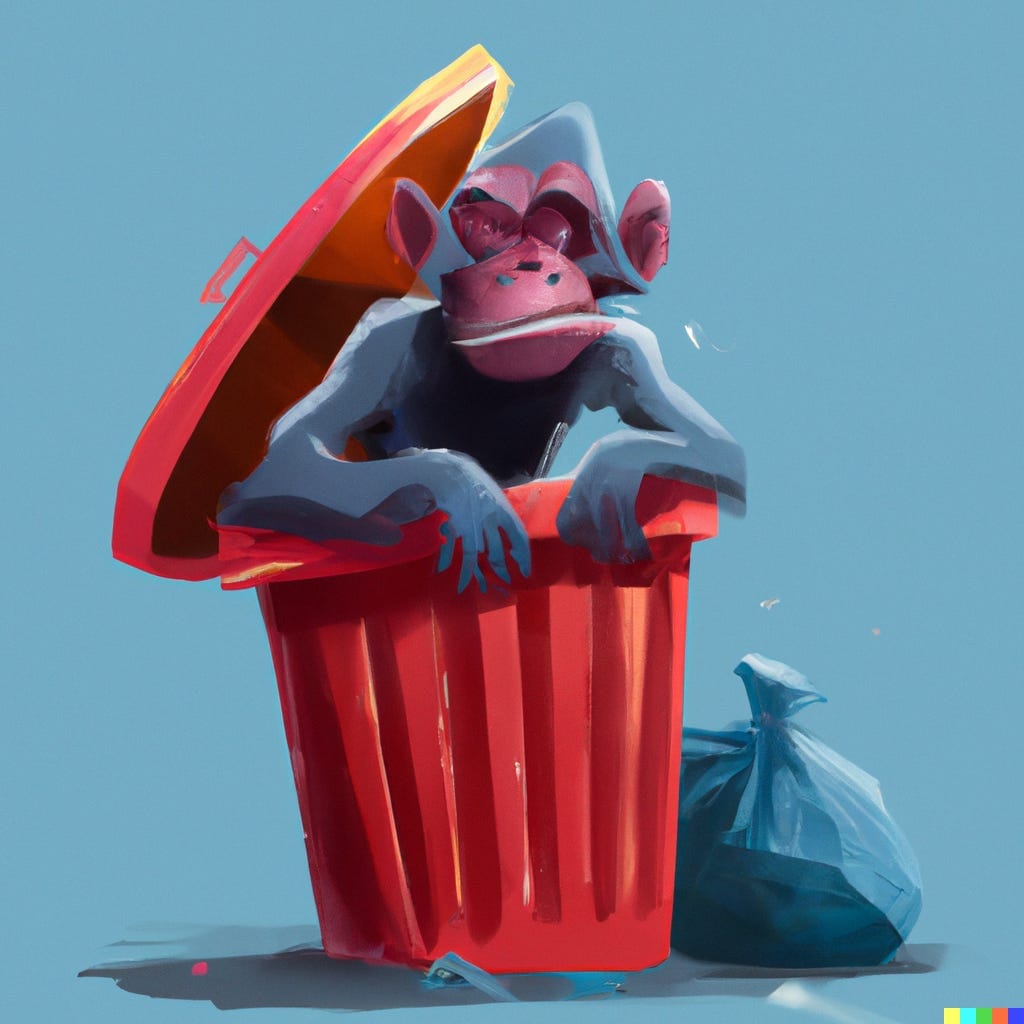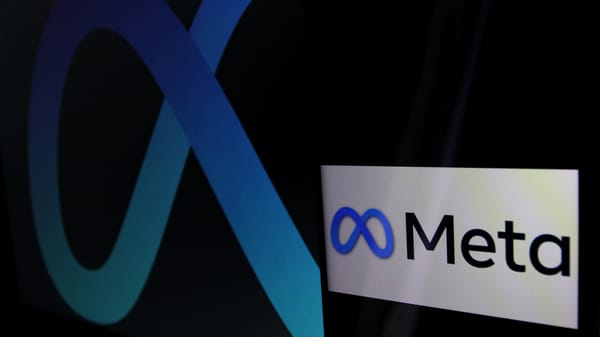Why social networks won't stop pushing NFTs
Crypto crashed just as Twitter, Meta and Reddit rolled out NFT avatars. Now what? PLUS: Elon keeps weaseling

The NFT boom of the past couple years appears to be conclusively over for average consumers. For big social networks, though, it appears that the work is just getting started.
The latest platform to embrace non-fungible tokens is Reddit, which on Thursday announced the arrival of “blockchain-backed collectible avatars” — unique profile pictures from artists riffing on Reddit’s “Snoo” alien mascot, giving purchasers the right to use them on and off the site. The avatars can be purchased only with fiat currency; Reddit takes a 5 percent cut of each transaction.
In a sign of how badly damaged the crypto brand has become, Reddit’s announcement takes pains never to refer to these avatars as NFTs, even though they are stored on the Polygon blockchain. Instead, in the marketing copy they are simply “collectible avatars.”
“We see blockchain as one way to bring more empowerment and independence to communities on Reddit,” the company said in its announcement. “Reddit has always been a model for what decentralization could look like online; our communities are self-built and run, and as part of our mission to better empower our communities, we are exploring tools to help them be even more self-sustaining and self-governed.”
Reddit is only the latest social network to offer users a way to set an NFT as their profile picture. Last week, Facebook began allowing some creators to showcase NFTs that they own on a new “digital collectibles” tab in their profile. The move came a month after Instagram added a way for creators to show off their NFTs. Spotify began letting some artists uses NFTs as their profile pictures in May.
What makes these moves notable is that they came just as demand for NFTs and crypto products generally fell off a cliff. Here’s Dan Milmo, writing on Saturday at the Guardian:
Sales of NFTs totaled just over $1 billion (£830 million) in June, according to the crypto research firm Chainalysis, their worst performance since the same month last year when sales were $648 million. Sales reached a peak of $12.6 billion in January.
The cryptocurrency market, worth about $3 trillion last November, is now worth less than $1 trillion.
Back in January, platforms like Reddit had several good reasons to consider adding NFTs to their products. To enthusiasts, it appeared as if the technology had solved a long-standing problem for digital artists: their work can be reduced instantly and infinitely online, reducing its value. By encoding art as non-fungible tokens, it appeared that artists might be better able to capture the value of the work they create and share online — and enable tech platforms to capture a healthy percentage of the transaction.
Demand for NFTs rose throughout 2020, eventually conferring upon owners of “blue-chip” collections like CryptoPunks and the Bored Apes Yacht Club a measure of social status. In September 2020, Twitter announced it would let subscribers to its premium offering, Blue, authenticate their NFT ownership and highlight their purchases with hexagon-themed profile pictures. That feature arrived in January, just in time for the market to peak.
You know what happened next: Russia’s invasion of Ukraine, rising inflation, crashing tech stocks, and cryptocurrency valuations plunging along with them. The less crypto was worth, the less of it that people traded. (Except, of course, for some high-profile cases in which too many people tried to get their money out, driving various crypto lenders to seek bankruptcy protection.)
The cultural value of NFT collections appears to have dropped proportionally along with their floor prices on OpenSea. Last month, ArtNet noted that some of the celebrities who had been pushing NFTs the hardest — and who may have been in a position to benefit from those sales financially — had quietly dropped them from their Twitter avatars. Among them: Jimmy Fallon, Serena Williams, Reese Witherspoon, Shonda Rhimes, Lil Durk, Travis Barker, and Meek Mill.
What once had appeared as chic, at least to an extremely online and crypto-zealous subset of Twitter users, suddenly seemed unbearably cringeworthy.
Of course, by then the social platforms had all spun up big teams to figure out how to integrate NFTs into their own products. And a bunch of products that were entering development in January, when any junior product manager could have made a convincing case for them, arrived several months later looking passé.
If social networks ever got the memo about crypto’s decline, they have so far refused to acknowledge it. Whether out of optimism about the future or in recognition of the considerable sunken costs involved, the companies’ NFT product roadmaps appear to be largely intact.
I contacted Reddit, Meta, and Twitter today to see if they would talk to me about how their NFT efforts are going; none agreed to talk with me. It’s a measure of their confidence in an eventual comeback for NFTs that they are at least releasing their NFT showcases, however indifferent the user base seems to be to them so far.
Meta in particular has continued to champion the long-term potential of NFTs, even positioning them as a bedrock of the virtual reality metaverse it seeks to build. The fact that NFTs are owned by individuals means in theory that they can be moved from service to service, platform to platform, creating a more interoperable version of the internet than the one we have today.
“Ideally, you should be able to sign into any metaverse experience and everything you've bought should be right there,” Mark Zuckerberg said in a June Facebook post. “There's a long way to get there, but this kind of interoperability will deliver much better experiences for people and larger opportunities for creators. That is, the more places you can easily use your digital goods, the more you'll value them, which creates a bigger market for creators.
Stephane Kasriel, Meta’s head of fintech, told the Financial Times this week that the company modify its crypto plans “in any way” due to the current crash. “The opportunity [Meta] sees is for the hundreds of millions or billions of people that are using our apps today to be able to collect digital collectibles, and for the millions of creators out there that could potentially create virtual and digital goods to be able to sell them through our platforms,” he told the paper.
Perhaps that opportunity will materialize eventually. It seem quite possible that platforms have the basic idea here right — that people really do want to own unique digital objects — but the product execution is wrong. Or perhaps they are simply too early.
In the meantime, though, social platforms keep releasing NFT features only to be met with shrugs. As the downturn in tech leads to layoffs across the board, it’s worth asking whether NFTs still deserve such a prominent place on the product roadmap — or whether they belong on the growing list of items these companies can simply no longer afford.
Elon’s weasel era, continued
Elon Musk’s deal to buy Twitter is “in peril,” according to this thin and credulous piece of reporting in the Washington Post. Instead of recognizing the complaints of three anonymous sources “familiar with the matter” for what they are — a ruse intended to lower the price of a company that Musk, in hindsight, overpaid for — the piece launders his months-old bad-faith complaints about bots and spam. (As a reminder, Musk said he was buying Twitter in part to fight spam, and now says he might renege on his agreement because Twitter has spam.)
Nothing in the Post’s piece suggests that Musk has honed his argument since June 6, when his team wrote a letter to Twitter complaining that the company is “resisting and thwarting” his efforts to get access to information about fake accounts on the platform. Two days after that letter, Twitter agreed to give Musk access to its “firehose” API, which contains every tweet as it is posted, to aid them in their research.
But the ingenious thing about conditioning the viability of a deal you already signed on continuously receiving “more” information about it is that you can renew your complaint an infinite number of times. No matter what Twitter offers Musk’s team, he can always say he needs “more,” and complain that any resistance he encounters constitutes a material breach of contract.
This morning I attended an earnest, data-rich background briefing with Twitter executives explaining the elaborate processes they use to identify fake accounts. For more than five years, they have attested to the Securities and Exchange Commission that such accounts represent under 5 percent of the user base. Over an hour-long virtual meeting, executives explained the combination of automated and human systems they use to root out phony actors. There is no evidence that the company has misrepresented itself here.
Its process does involve examining some private information that isn’t available in the firehose API, such as users’ phones number and IP addresses. Perhaps Musk could have sought some of that information before buying the company, instead of waiving his right to view any nonpublic information about Twitter before buying it. Perhaps Twitter could have found some ways to share it without violating its user base’s expectations of privacy.
But to walk too far down that road makes the mistake the Post does, assuming that these are complaints raised in good faith. They’re not. Laundering them through the press was a predictable next step in Musk’s effort to lower the deal price, and a few steps after this one we should expect to see the whole thing land in a courtroom.
Elsewhere in Twitter: The company laid off 30 percent of its talent acquisition team amid the Musk morass. And Twitter began testing “CoTweets” to let two accounts post a message together.
Oh also, an investigation revealed that Elon Musk had twins with a top executive from his company Neuralink last year. He subsequently tweeted that he is “doing [his] best to help the underpopulation crisis.”
Platformer Recommendations
A nice thing Substack did recently was make it easier for writers to recommend other newsletters on the platform. You can find all my recommendations on this page, along with short blurbs on what I like so much about the publications. New subscribers to Platformer on the web will also see a pop-up highlighting a handful of my recommendations at random.
These recommendations are not sponsored, and I make them without consideration to whether a newsletter links back to me. There’s no quid pro quo here, just sincere enthusiasm.
I’ve benefited significantly from other people recommending Platformer — the newsletter has gained more than 4,000 free subscribers in the past two months, and Substack recommendations seem to be a big reason why. And so I’m excited to point more people to some of the new media I love most — Crypto Island, She’s a Beast, Read Max Read, and all the rest.
Governing
- Video of the Highland Park shooting has continued to spread despite rapid removals from social networks. The framing of this story suggests this is a platform problem; I think it’s an unfortunate consequence of having an internet. (Davey Alba and Cecilia D'Anastasio / Bloomberg)
- The US Office of Government Ethics declared that officials working on crypto-related policies and regulations are forbidden from owning cryptocurrencies. (Cheyenne Ligon / CoinDesk)
- An amendment to the United Kingdom’s online safety bill would prevent platforms from removing news content until they had notified publishers and given them a chance to appeal. (Dan Milmo / Guardian)
- A timely primer on the Digital Markets Act and Digital Services Act, which could reshape platforms and competition after they received final approval from European Parliament this week. (Ashley Gold / Axios)
- The FBI and Britain’s domestic security agency issued a rare joint warning about the threats of Chinese espionage designed to steal tech companies’ intellectual property. (Max Colchester / Wall Street Journal)
- YouTube blocked a film documenting human rights violation in Kashmir on demand of the Indian government. (Aarathi Ganesan / Medianama)
Industry
- Meta introduced new “Meta accounts” allowing people to log into its virtual reality interface without using a Facebook account. (Adi Robertson / The Verge)
- Meta’s forthcoming high-end virtual reality headset will be called the Meta Quest Pro and cost more than $1,000. (Mark Gurman / Bloomberg)
- Google said it has begun holding “moral imagination” workshops to help employees think through the potential negative consequences of AI. Would love to hear more about this! (Google)
- A look at Amazon’s efforts to accelerate live-streaming e-commerce, offering thousands of dollars in bonuses to creators. (Dave Lee / Financial Times)
- The value of Yandex, Russia’s biggest tech company, collapsed from $31 billion to $7 billion after the invasion of Ukraine. (Neil MacFarquhar / New York Times)
- Geography fanatics are playing GeoGuessr, in which players attempt to rapidly identify the location of images taken at random from Google Maps’ StreetView. “You can click to travel down roads and through cities, scanning for distinguishable landmarks or language. The closer you guess, the more points you score.” (Kellen Browning / New York Times)
Those good tweets
Every tweet out of the UK right now is like "Daniel Waddingham has turned in his Mustn't Slip. That brings the number of resignations to 2,742 this afternoon. Boris Johnson has sacked the Minister of Beans on Toast, but refuses to personally step down."
— Ben Collins (@oneunderscore__) 9:29 PM ∙ Jul 6, 2022
every elon musk tweet is like “mayhaps why do hot dog buns come in packs of 8, yet heretofore hot dogs come in 10 perchance? 🤣🤣 2 many weener!” and then one trillion weirdos in the replies say this is incredible. thank you sir. will you please fund my divorce
— soul nate (@MNateShyamalan) 8:26 PM ∙ Jul 5, 2022
im a proud tesla employee. do i work 13 hour days? yes. is my job to keep elon from biting wires? sure. do i have to bring a bucket of decoy wires to throw him off the scent of important ones? you bet. was the guy before me impaled by a forklift? legally i cant say. nevertheless,
— soul nate (@MNateShyamalan) 4:12 PM ∙ Jul 6, 2022
I thought this was fried chicken
— ᴘᴀᴠʟᴏᴠ ᴛʜᴇ ᴄᴏʀɢɪ (@PAVGOD) 3:35 AM ∙ Jul 6, 2022
Talk to me
Send me tips, comments, questions, and NFT features: casey@platformer.news.





